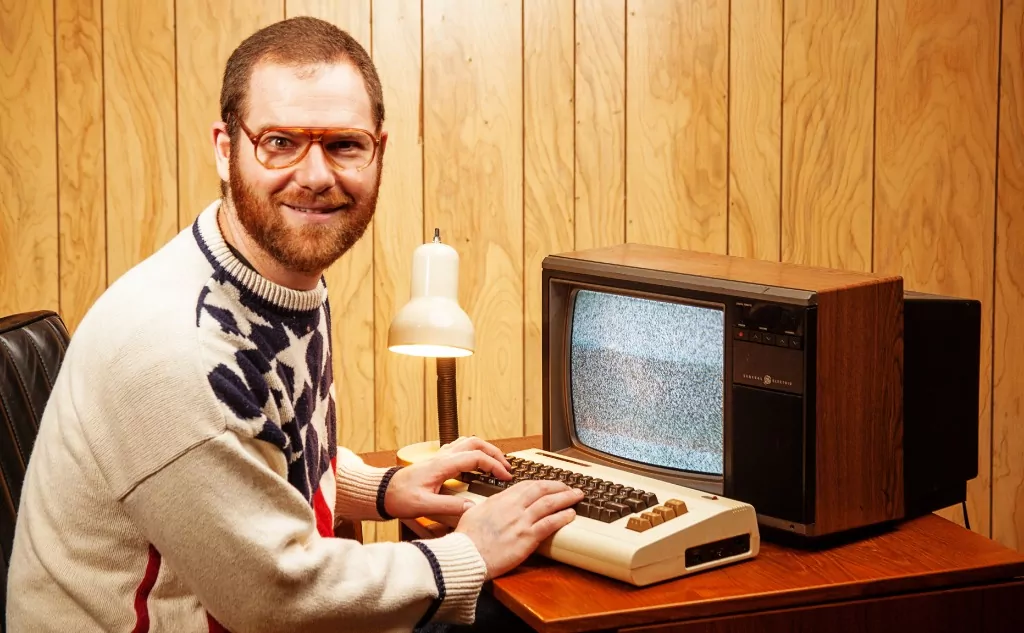Here’s what happens when you delete the System32 folder in Windows:
Just don’t do it.
Learn here why it’s a bad idea and what happens if you do it.
Let’s get right into it!

Why NOT Deleting the System32 Folder in Windows?
You may have seen some “delete System32 to make your computer run faster” or “your System32 is causing viruses” jokes swirling around on the internet.
An honest and straightforward advice? DON’T fall for it!
Windows heavily relies on the System32 folder, so deleting it will ultimately result in the system crashing and becoming inoperable.
In simple terms, the folder System32 is an essential aspect of running your Windows computer.
The computer program is essentially just a collection of files, and the vast majority of all Windows files reside in your System32 folder.
So, in essence, System32 is Windows.
In most cases, it’s pretty difficult to delete the System32 folder from your computer.
However, some have unfortunately fallen prey to a scam that suggests they should do so.
Below, you’ll find the answers to the most common questions concerning why you should never delete System32 and what might happen if you do:
What is System32 in Windows?
First, we must answer the biggest question:
What is System32 in Windows?
Located at C:\Windows\System32 or C:\Winnt\system32 on your computer, System32 is a Microsoft Windows system directory that is crucial to the Windows system.
It contains many essential operating system files necessary for running the Windows system and other software programs.
You’ll find various files within this folder, with the most common file types as DLL (Dynamic Link Library) and EXE (executable) files.
Other vital programs include Control Panel, Disk Management, Calculator, PowerShell, Task Manager, and more.
When you open almost any file on your computer, you’re most likely running from the System32 folder.
For example, using the Command Prompt is actually operating cmd.exe from the System32 directory.
Since the System32 folder is required to operate your Windows system, you should never delete it.

Even an attempt to delete the folder would prompt multiple error messages.
Deleting the folder would result in a failure to reboot the system.
Since the early 2000s, many internet pranksters have tricked users into deleting their System32 folder.
The most common misconception is that it removes viruses or fixes other issues.
However, there are alternatives to solving these issues.
What Happens if You Accidentally Delete System32?
The System32 folder contains critical information to run your Windows machine properly.
Deleting the System32 folder will result in the Windows system shutting down.
If you try to open or run certain functions, you may receive error alerts.
The system will begin to fall apart slowly, one function at a time.
After deleting System32, any attempt to shut down the computer will be denied.
Instead, you’ll have to force close the computer.
Upon rebooting the computer, the computer will try to start an automatic repair process (as it usually would), only then to be greeted with a blue screen that says the computer failed to repair the system.
Even trying advanced options won’t work.
In short, by deleting System32, your computer simply won’t operate and be unable to reboot.
Deleting System32 is never recommended.
If your computer begins to experience viruses or other issues, use antivirus software to remove the virus, rather than deleting the whole system.
What Happens if You Delete a Few Files Within System32?
Similar to deleting the whole System32 folder, deleting even just a few files within the folder will result in a failure to start your computer.
Your system will gradually begin to stop working, and the computer won’t turn back on due to missing files.

At this point, the best option would be to save as many files by using a data recovery tool.
Upon recovering your data as best you can, you’ll then want to prepare an external hard drive large enough to save all your necessary files.
Once you’ve done that, you’ll need to prepare a Windows installation medium and set your computer to boot from the preferred medium.
Now, you’re ready to reinstall Windows on your computer.
How to Delete the System32 Folder (Or Rather, How to Avoid It)?
Now obviously, we’d never recommend deleting the System32 folder, and you should know why by now.
However, it may be helpful to know how to delete the System32 folder so you can better avoid it from happening.
Trying to delete the System32 folder normally will result in a pop-up message that says, “Folder Access Denied.”
You should know that the only way to delete the System32 folder successfully is by taking ownership of the folder, giving you full control over its contents.
Once you’ve taken ownership, you still may receive an alert from Windows saying the action can’t be done because files located inside the System32 folder may be open and operating.
Now, just as a side note:
You’ve probably noticed it’s actually really difficult to “accidentally” or even intentionally delete the System32 folder.
It takes quite a bit of effort to sift through all the advanced settings and figure out which road to take.
By launching the Command Prompt and typing the “del” command to delete files in System32, the System32 folder will gradually break down and delete files that aren’t in use.
Many error messages will begin to pop up on your screen, as well, and your computer will eventually shut off.
Since deleting the System32 folder also deleted repair files required to reboot your computer, it’ll be impossible to get your computer back up and running. Your computer is now officially inoperable.
Is it True that a System32 Folder is Actually a Virus?
Viruses can hide behind your System32 folder, similar to malware.
But System32 itself is NOT a virus, neither can a virus delete System32. This is another common misconception.
If you’ve seen “advice” floating around the internet or social media saying that the System32 folder is a virus, ignore it.
This is a common practical joke targeted at many beginners or technologically inept users looking for solutions.
While some claim that deleting it will restore a high-speed internet connection, this simply isn’t true.
Regardless of how eloquently the prankster explains it, don’t fall for this hoax.
Can the System32 Folder Be Bad at All?
However, while System32 is not a virus, it’s more easily prone to get infected.
When a virus is set loose on your computer, the first system it will try to attack is System32 since it contains the most important data.
Deleting your System32 folder will give the virus freedom to control your computer from the inside out, and thus result in the total shutdown of your machine.
Instead, look for third-party antivirus software to scan and remove the virus or malware from your computer.
But remember: the System32 folder on your computer is NOT a virus and should NOT be deleted.
How to Rescue Data From an Unbootable Computer?
To ensure the safety of files on your computer, you may as well rescue them beforehand.
Under a previous heading, you can find a brief and quick summary of how to rescue data from an unbootable computer.
But, if you have a little more difficulty with it, read on to learn the step-by-step process on how to rescue your data.

First, you’ll need to find a third-party data recovery software. Also, make sure you have an external hard drive to store all your files on.
Download and install your data recovery software on a regular working computer.
Next, create a bootable medium (for example, CD, DVD, USB) and boot the unbootable computer from your medium.
Then, your computer is ready to recover your data.
Connect the external hard drive to your computer and select the drive that contains the files you want to rescue.
After you finish your scan, find the files you want to restore and save them. Transfer your saved files to the external hard drive.
Now, you’re ready to reinstall Windows.
You’ll need to find an installation tool and create a Windows installation medium (which may take some time).
Then, you can begin a clean installation process.
Connect your installation medium to your unbootable computer and choose the operating system you want to install.
Remove the partition from the hard drive and start the installation process on the empty partition.
Once the installation process is complete, your System32 folder is fully restored.
How to Ensure Protection and Backup Your Computer?
Regardless of whatever issue or viruses your computer may encounter, never delete your System32 folder.
However, some of these issues could have an effect on the system.
The best way to avoid any potential problems is by regularly backing up your computer.
With everything stored on your computer, it’s important to make sure everything is protected.
You’ll find many experts recommend a 3-2-1 backup rule:
three total copies of your data, two of which are local but on different mediums (for example, external hard drives, and at least one (or a “cloud” backup) copy off-site.
Backing-up your computer can help prevent any accidental deletion of the System32 folder, as well.
Since System32 is susceptible to attacks from viruses, you’ll want to ensure the protection of your computer.

